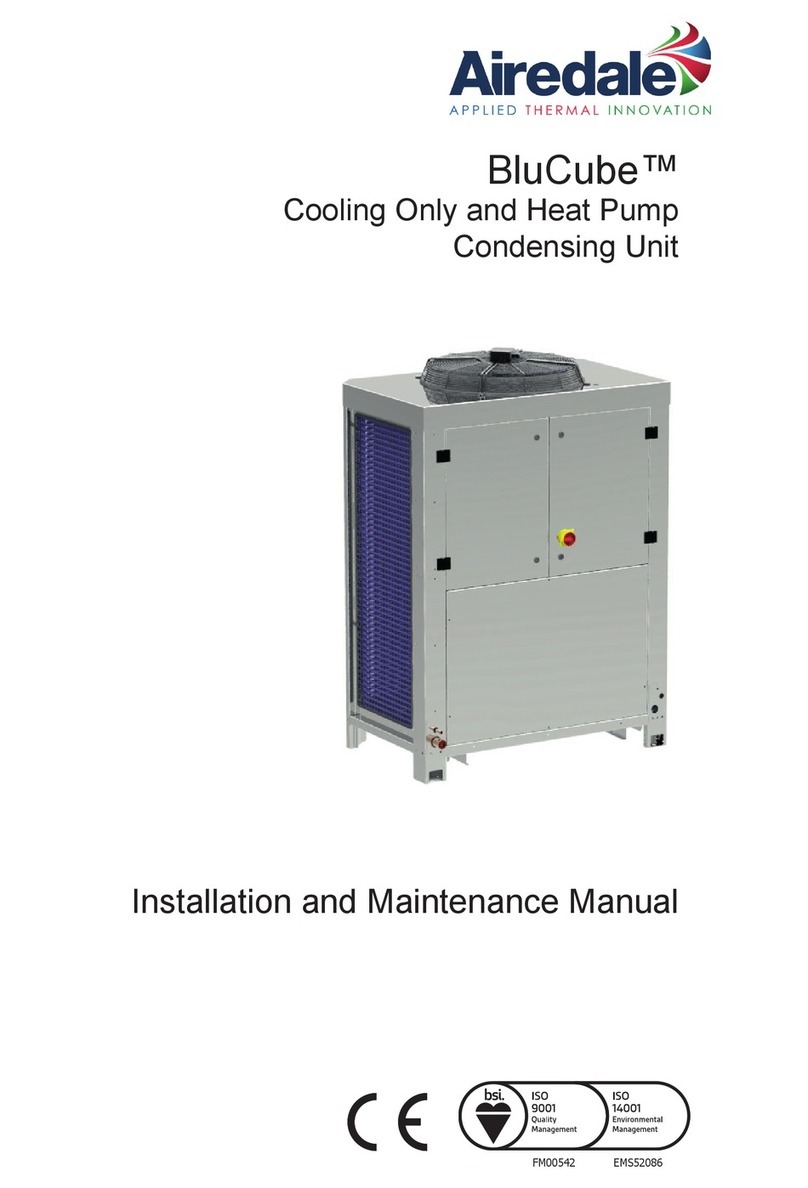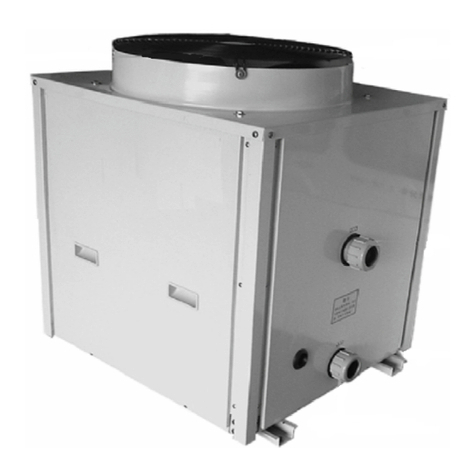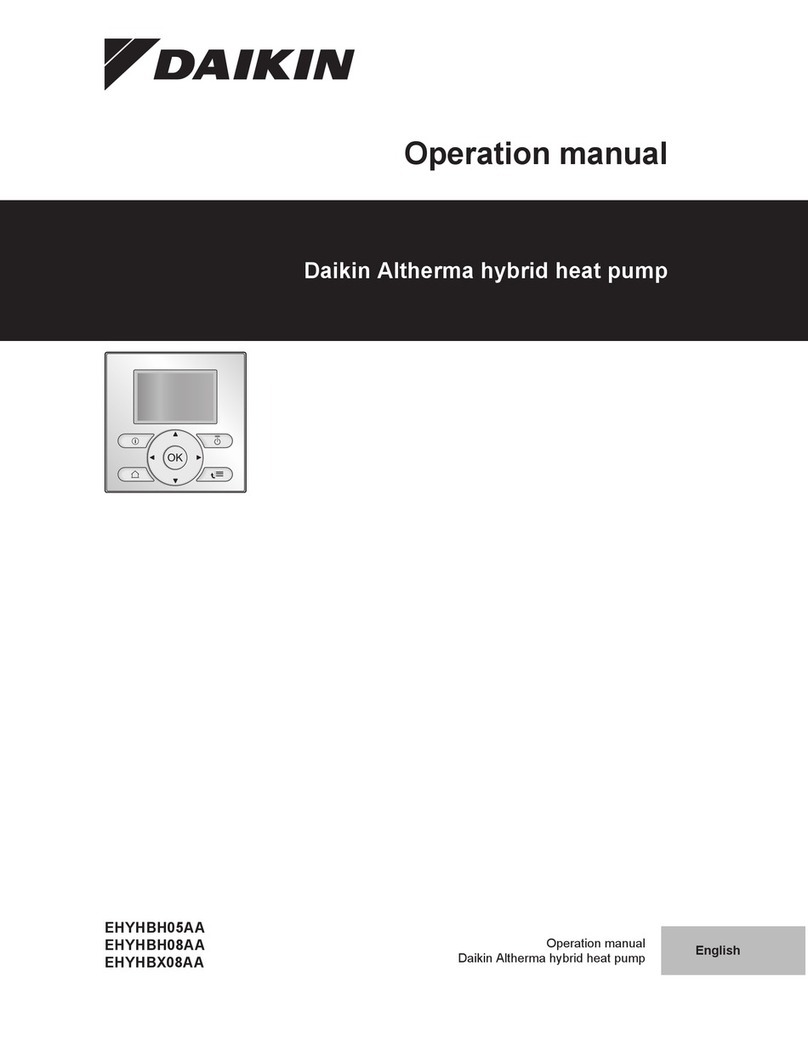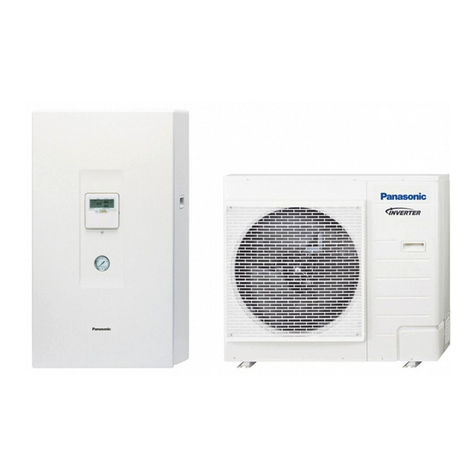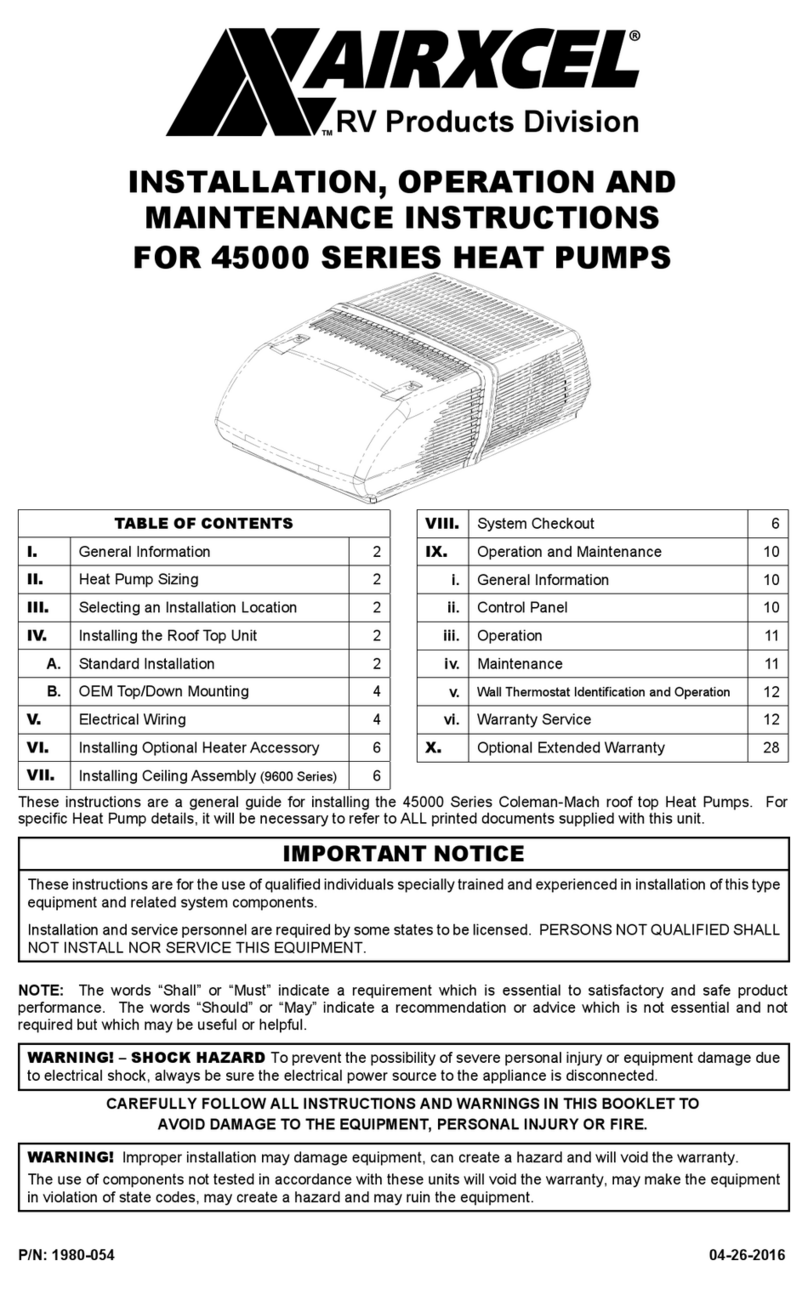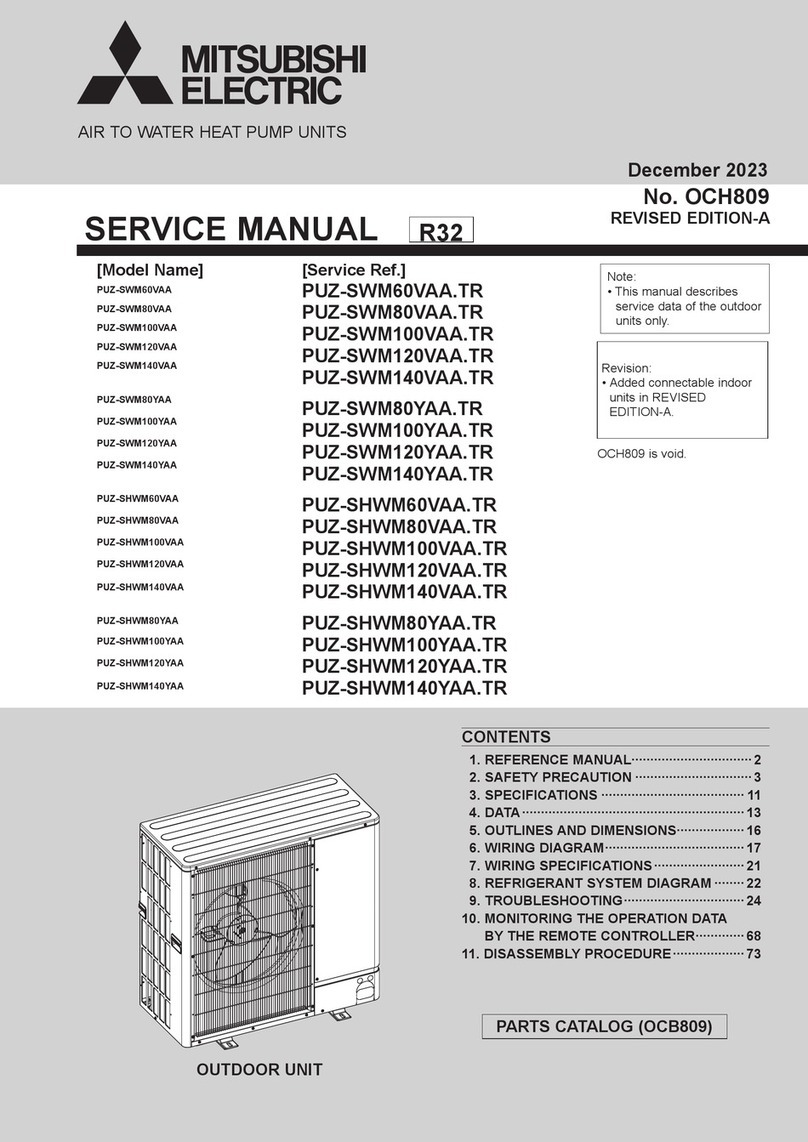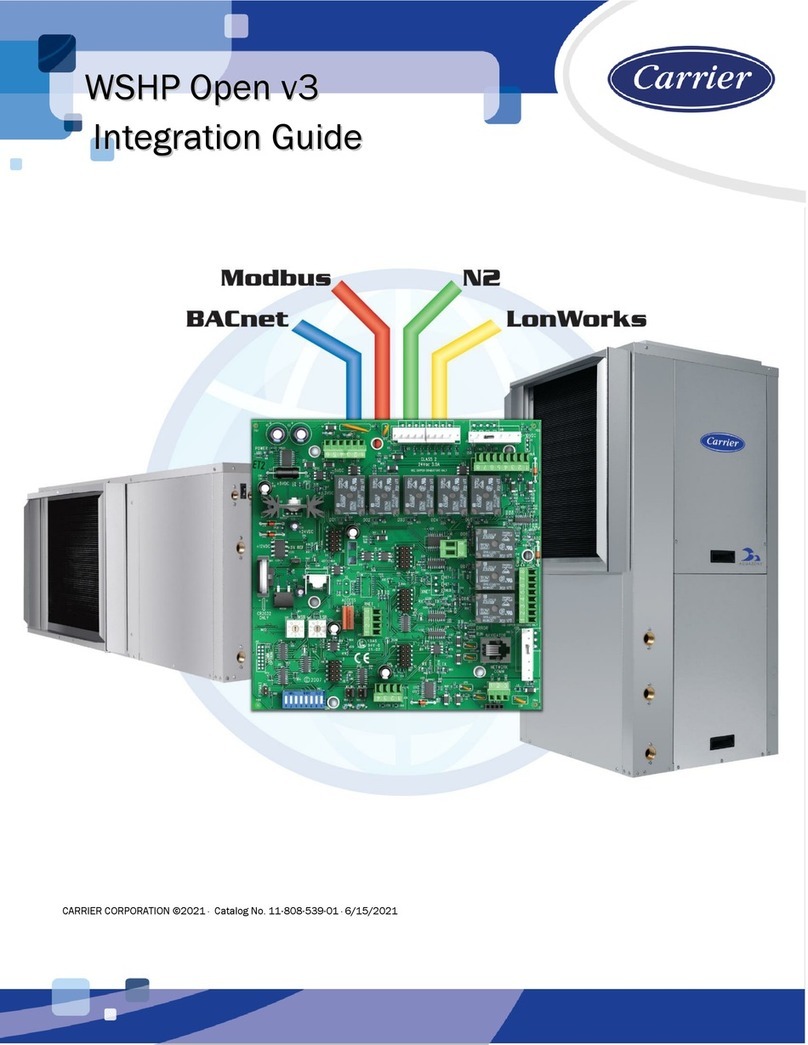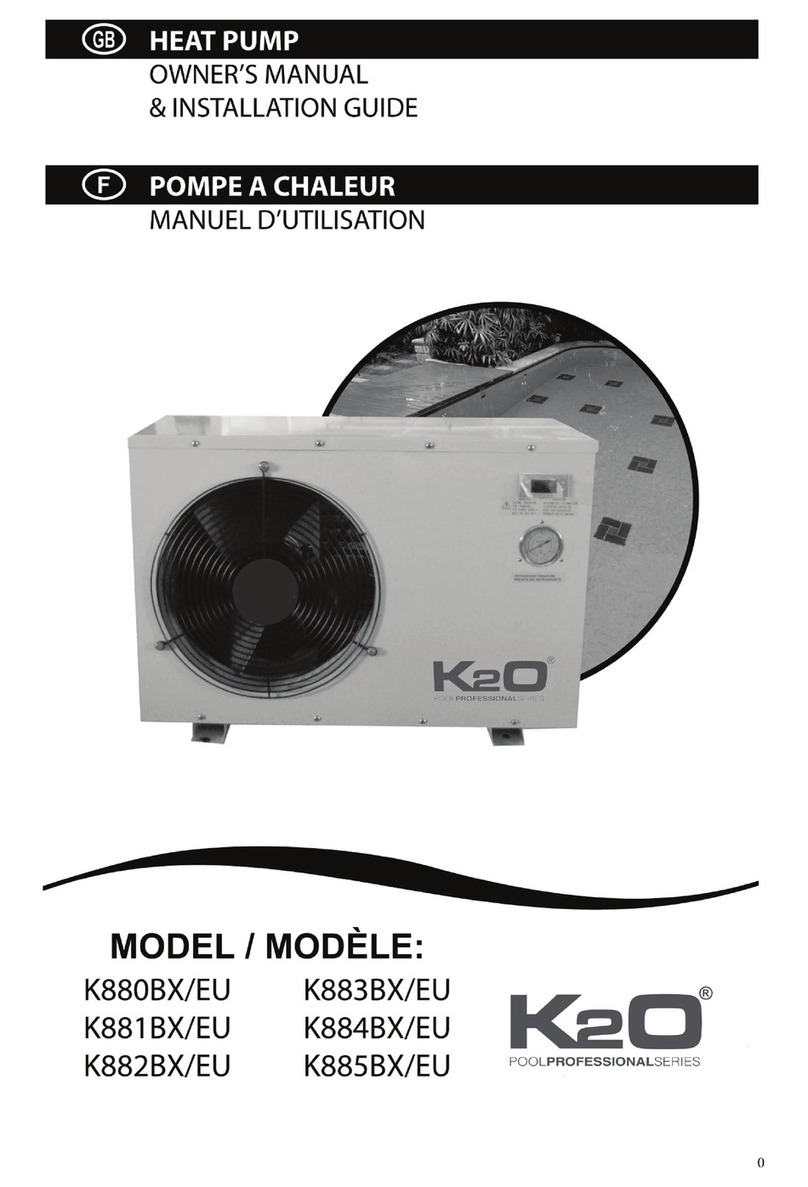
506860-03Issue 1827Page 2 of 29
Installation
General
Read this entire instruction manual, as well as the
instructions supplied in separate equipment, before
starting the installation. Observe and follow all warnings,
cautions, instructional labels, and tags. Failure to comply
with these instructions could result in an unsafe condition
and/or premature component failure.
These instructions are intended as a general guide only
for use by qualied personnel and do not supersede any
national or local codes in any way. The installation must
comply with all provincial, state, and local codes as well as
the National Electrical Code (U.S.) or Canadian Electrical
Code (Canada). Compliance should be determined prior
to installation.
This condensing unit uses R410A, which is an ozone-
friendly HFC refrigerant. The unit must be installed with a
matching indoor coil and line set. A lter drier approved for
use with R410A is installed in the unit.
IMPORTANT: This product has been designed and
manufactured to meet ENERGY STAR criteria for energy
efciency when matched with appropriate coil components.
However, proper refrigerant charge and proper air ow are
critical to achieve rated capacity and efciency. Installation
of this product should follow the manufacturer’s refrigerant
charging and air ow instructions. Failure to conrm proper
charge and airow may reduce energy efciency and
shorten equipment life.
When servicing or repairing HVAC components, ensure
the fasteners are appropriately tightened. Table 1 shows
torque values for fasteners.
Table 1. Torque Table
Fastener Torque
Stem Caps 8 ft. lbs.
Service Port Caps 8 ft. lbs.
Sheet Metal Screws 16 in. lbs.
#8 Machine Screws 16 in. lbs.
#10 Machine Screws 28 in. lbs.
Compressor Bolts 90 in. lbs.
Inspection of Shipment
Upon receipt of equipment, carefully inspect it for possible
shipping damage. If damage is found, it should be noted
on the carrier’s freight bill. Take special care to examine
the unit inside the carton if the carton is damaged. Any
concealed damage discovered should be reported to the
last carrier immediately, preferably in writing, and should
include a request for inspection by the carrier’s agent.
If any damages are discovered and reported to the carrier
DO NOT INSTALL THE UNIT, as claim may be denied.
Check the unit rating plate to conrm specications are as
ordered.
Location of Unit
Outdoor units operate under a wide range of weather
conditions; therefore, multiple factors must be considered
when positioning the unit. The unit must be positioned
to give adequate clearances for sufcient airow and
servicing.
Refer to Figure 1 for installation clearances.
• Place a sound-absorbing material, such as Isomode,
under the unit if it will be installed in a location or
position that will transmit sound or vibration to the
living area or adjacent buildings.
Figure 1. Installation Clearances
* A service clearance of 30” must be maintained on one of the
sides adjacent to the control box. Clearance to one of the other
three sides must be 36”. Clearance to one of the remaining two
sides may be 12” and the nal side may be 6”.
A clearance of 24” must be maintained between units.
48” clearance required on top of unit. Maximum soft overhang is
36”.
• Install the unit high enough above the ground or roof to
allow adequate drainage of defrost water and prevent
ice buildup.
• In heavy snow areas, do not locate the unit where
drifting snow will occur. The unit base should be
elevated above the depth of average snows.
NOTE: Elevation of the unit may be accomplished
by construction a frame using suitable materials. If a
support frame is constructed, it must not block drain
holes in unit base.

